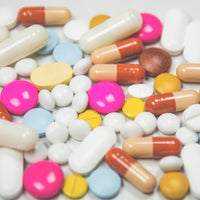Lately, more and more parents have started to wonder about the connection between ADHD and autism. Some parents struggling with an autistic child or with managing ADHD symptoms have started to wonder if their child has been wrongly diagnosed. This idea has a basis in reality.
After all, ADHD and autism do share some stark similarities. Additionally, the prevalence of both has increased dramatically over the last several years. From a report put out in 2011, the CDC listed both ADHD and autism as part of the developmental diseases that had increased by 17% in children between 1997 and 2008. With such similarities in the rise in diagnoses, many parents want to know if a misdiagnosis might have occurred or if their child could possibly have both conditions.
With greater exposure and research, many parents perhaps feel they now know quite a bit about ADHD. For many, autism, though, remains something of a mystery. In this article, we want to explore more the connection between ADHD and autism. We want to try to understand both conditions better. Finally, we want to look at their similarities and differences so that parents can have a better idea of how to approach either one.
Let’s begin with breaking down each condition individually. We’ll start with a closer look at autism and then with ADHD. With a better grasp of each condition, we can then really look at the similarities and differences they have with one another.
What is Autism?
The first part of unraveling the connection between ADHD and autism involves understanding both conditions better. As most of our readers might be familiar with ADHD, we will start with clearly defining autism. Autism, or autism spectrum disorder, involves a mental condition in which communication and social interaction are impaired. Understanding autism spectrum disorder starts with seeing what the symptoms look like.
Symptoms of autism
Autism usually is referred to as a spectrum disorder as doctors now view autism as a variety of similar conditions. Each condition then expresses a range of characteristics from repetitive behaviors to limited speech communication to varying ranges of social skill development. This spectrum of related conditions makes pinning down specific symptoms of autism more difficult but not impossible.
Though different people who fall in the autism spectrum express symptoms differently, nearly all symptoms arise around limitations in social skills, outward behavior, and communication. In fact, the first indicators of autism might include lack of social skills or lack of communication development.
Most children with autism struggle interacting with others and usually avoid social situations. They typically find more interest in inanimate objects or toys rather than other people. Many children showing these social markings of autism prefer to play alone and avoid physical contact. Additionally, they show little understanding or empathy with the emotions of others.
In addition to the social limitations, many children with autism struggle with developing communication skills. Many children with autism have a much delayed communication development. Some, up to 30% of patients, might never develop verbal communication at all. Some signs of delayed communication development include the inability to understand jokes or comical expressions and difficulty with using pronouns correctly.
Finally, the last major symptom category of autism lies in a child’s outward behavior. Many times children with autism exhibit repetitive unusual behaviors such as hand flapping or rocking back and forth. Additionally, similar to ADHD, many children with autism appear hyperactive and possibly impulsive or aggressive.
Diagnosis of autism
Unlike ADHD, autism typically starts to show up early when a child is 2 or 3 or in some cases as early as 18 months. It’s estimated that about half of parents with children with autism will see signs before their child turns 1 year old. Nearly 90% then will have identified symptoms by the time their child turns 2 years old.
Still, while one might see signs of autism at this young age, actual diagnosis might come much later. The reason being that providing a definitive diagnosis can sometimes be challenging. There exists no blood test for autism. Rather, diagnosis is made through the use of screenings and observations made by medical personnel.
If you see signs of autism in your child, you should consult with a doctor. Through regular checkups, your doctor may similarly notice some symptoms and refer you to a specialist trained in autism. A specialist then might run tests or screenings or ask for input from other specialists to make a final diagnosis.
Treatment of autism
Similar to ADHD that we will discuss below, currently there is no cure for autism. Still, there exists many therapies or resources to help individuals with autism. Most of the approaches to treating autism involve some form of therapy or intervention program. In some cases, doctors might also prescribe medications to help address some autism symptoms.
For starters, many doctors and providers recommend social skills therapy to help address autism symptoms. The basic premise of social skills therapy involves teaching children how to interact better. Different therapies can take on different structures or forms, but ultimately they all seek to encourage positive social interactions. Many providers believe that such strategies can help improve social skills over time.
Additionally, another approach to treating autism involves applied behavior analysis, or ABA for short. Some studies point to ABA as helping to eliminate many symptoms of autism to such an extent that patients no longer fall within the autism spectrum. Though still controversial in some circles of thought, ABA has nevertheless become a predominate means of treating autism.
Applied behavior analysis uses one on one therapy techniques to help encourage positive behaviors and interactions. Typically, with ABA, a parent or counselor will work with a child on an extended basis slowly teaching the child to use positive interactions and receive rewards or positive feedback. Over time, the hope would be that a child would gradually learn and improve their social and communication skills and behavior.
What is ADHD?
Though most of us know ADHD and its symptoms, it’s, nevertheless, still helpful to review a definition of ADHD. ADHD occurs as one of the most frequently diagnosed mental disorders in children. It appears as a rewiring of the brain’s processes and impacts the executive functioning processes most. As with autism, let’s look closer at the symptoms, diagnosis, and treatment of ADHD.
Symptoms of ADHD
Typical symptoms of ADHD include the inability to focus, hyperactivity, and impulsivity. Individuals with ADHD tend also to have trouble with social interactions and may have difficulty processing emotions or information. Many people, children especially, with ADHD will have trouble staying focused or following directions. They may have hyperactive outbursts or have trouble controlling their emotions.
Additionally, while people most often associate ADHD with hyperactivity, doctors actually diagnosis three distinct types of the disorder. Individuals with ADHD can have inattentive type, hyperactive type, or combined type. Each type has slightly different symptoms.
The hyperactive type has symptoms more aligned with impulsive quick decisions. The inattentive type, on the other hand, appears usually as more reserved and possibly distracted or not paying attention often. The combined type, then, exhibits characteristics of both the other types.
Ultimately, the symptoms of ADHD can manifest slightly differently in different people. Generally, though, doctors look for key indicators that point towards the condition. If you have concerns, you can try comparing your child’s behavior with a symptom checklist and then consult with a doctor about diagnosis.
Diagnosis of ADHD
Many times, doctors diagnose ADHD when a child has entered elementary school, usually after ages 7 to 9. Typically, the school environment helps parents and teachers identify possible ADHD symptoms before confirming a diagnosis with a doctor. If parents or teachers suspect ADHD, the next step towards diagnosis involves seeing a doctor or specialist.
A doctor or specialist can then ask questions and through observational screenings make a determination on diagnosis. Typically, a diagnosis will only be made after symptoms have been present for at least six months, have occurred in more than one setting, and have shown themselves in tendencies after a certain age. After diagnosis, working with a doctor or counselor, parents can then begin to treat symptoms in a number of ways.
Treatment of ADHD
While there exists no known cure for ADHD, doctors and caretakers do have some resources to help manage ADHD symptoms. After diagnosis, doctors can prescribe prescription medication stimulants as needed. Typically medication such as Adderall or Ritalin can help most individuals with ADHD limit their symptoms.
Medication, though, rarely resolves all the issues connected with ADHD, and for some individuals medication does not provide much relief. As a result, many providers recommend implementing a comprehensive ADHD treatment plan. Under such plans, providers look at a holistic resolution for ADHD symptoms. Such an approach typically includes a balanced use of supplements, keeping diet in check, exercise, and behavioral management.
Even without a cure, many individuals with ADHD can learn to effectively manage their symptoms over time. Ultimately, some symptoms might recede or disappear altogether. For others, they may deal with symptoms over their lifetime, but with routine and structure they may not realize much of an impact from them.
Similarities and Differences between ADHD and Autism
Some people see a connection between ADHD and autism in their high rate of comorbidity. This simply means that many people with ADHD or autism tend to also have other disorder diagnoses as well.
Others, though, simply find a connection in the similar symptoms between ADHD and autism. Since both ADHD and autism occur as two of the most diagnosed mental disorders in children, it’s important to understand their similarities and differences. Let’s look at each of those more in depth.
Similarities between ADHD and autism
Much of the connection between ADHD and autism lies in the social development aspect of the conditions. For instance, a study from 2016 found that children with autism had been misdiagnosed with ADHD due to a particular screening used to diagnosis ADHD. This study found that the screening failed in these cases because of the social limitations found in both conditions. The screening improperly interpreted the social impairments of autism for definitely being ADHD. Ultimately, the researchers recommended that the screening tool be adjusted to account for these similarities.
Additionally, as mentioned above, both ADHD and autism have a high rate of comorbidity with other physical and mental ailments. Furthermore, both ADHD and autism occur far more often in boys than they do in girls. These similarities may point to a common link in how the conditions occur.
Furthermore, there exists no known cure for either ADHD or autism. Although, both have treatment strategies that may help to limit symptoms or improve social functions over time. They even have similar methods of treatment which usually involve some form of behavioral intervention.
Finally, not only do ADHD and autism share some symptoms, they also share similarities in how others respond to the symptoms. For instance, isolation and bullying occur frequently as a problem for children with either condition.
All these similarities add up to sometimes create a complicated picture. The connections here can blur lines between the two conditions sometimes making a diagnosis especially difficult. Still though, we need to understand these conditions are not exactly the same.
Differences between ADHD and autism
While ADHD and autism possess similarities, they also have some clearly defined differences, as well. As mentioned already, one noted difference between ADHD and autism involves when symptoms start to manifest in a child. For autism, symptoms can occur and develop in a child’s early years from 18 months to 3 years. ADHD symptoms, on the other hand, usually develop when a child turns 7 up to when they turn 9 or later.
Additionally, communication skills tend to be less developed in children with autism as opposed to those with ADHD. In fact, many children with autism do not use verbal communication at all. Children with ADHD tend not to have communication issues as severe.
Furthermore, while children with ADHD may struggle with social interactions, children with autism tend to disengage altogether. Children with autism many times do not empathize with others at all and would rather engage with toys. Children with ADHD may find it difficult understanding others, but they do not necessarily disengage altogether.
Finally, many of the symptoms of ADHD can be effectively managed with prescription medication. Medication use for autism might be an option, but typically other methods are pursued for treatment. In cases of ADHD, though, doctors usually find some success in treating symptoms with medication.
Depend on a Support Network to Manage Symptoms of ADHD and Autism
The system we have currently for diagnosing and treating both ADHD and autism isn’t perfect. Currently, researchers are still conducting studies and learning more about both these conditions on a regular basis. While we know a lot already, we don’t yet know everything. While this might be concerning, especially for parents concerned about a proper diagnosis for their kids, it doesn’t mean you should have no hope.
After all, as a parent, you have plenty of resources to turn to. We here at FastBraiin want to be one of those resources. Ultimately, you need to build around you a quality support network of friends, family, doctors, and specialists, who can help you on your journey for managing either ADHD or autism. ADHD and autism make life challenging and sometimes make things unclear. This doesn’t mean you have to give up, though.
We hope this article has helped to shed some light on the similarities between ADHD and autism. We encourage you to find out more and become your own ADHD expert. Learn as much as you can and then team up with others around you to help manage life well with either ADHD or autism.




